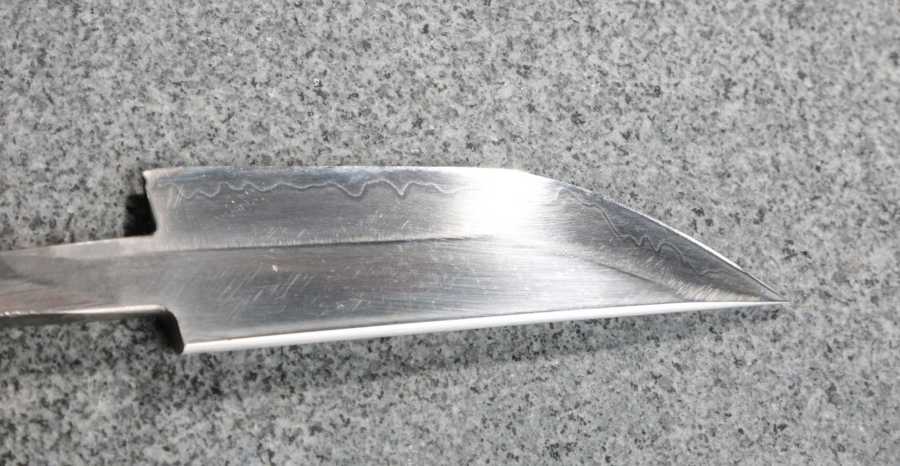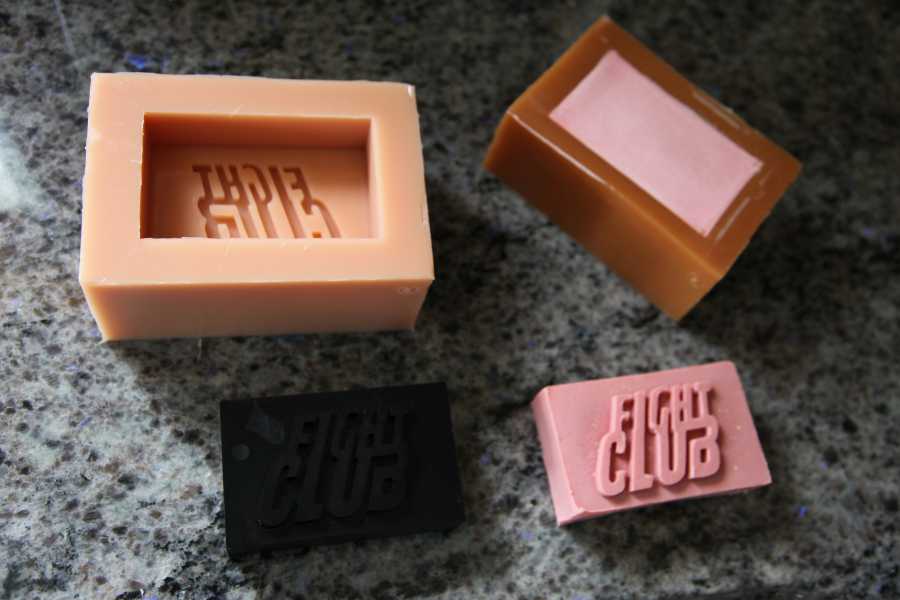San mai is Japanese for “three layers.” A few years ago, one manufacturer sent around “cease and desist” letters to many bladesmiths that were using that architecture, since their company felt they were the ones who made san mai great again, or something like that. They were roundly told to shove it, and it stuck because the manufacturer was not willing to spend Disney-amounts of money on lawyers.
“Ni” is not just what knights say, it’s Japanese for “two”, so “ni mai” is two-layer, which is a typical blade architecture for a chisel-ground blade (including: a chisel) like a sushi knife (“yanagiba”) or a kiridashi. Nobody does “shi mai” (4-layer) because then there is no unique piece of steel making up the edge. “Go mai” (5-…) is not uncommon, especially among makers who enjoy laminating nickel metal or copper in the transition-zones between the core and the faces.
The manufacturer who sent the “cease and desist” letters considered themselves as having perfected the production of stainless/high carbon/stainless three-layer blades. It’s a neat construction, to be sure, but as I mentioned in my earlier posting, you have a lot of additional considerations welding high carbon to stainless. It took me a total of 6 attempts to get the billet that I have been working on, though I have had several other successful weld-ups.
Grinding the blade, I was constantly examining it for delaminations in the weld, or cracks in the edge. So far, so good.

For all intents and purposes we’re out of the woods, now. All that’s left is final polishing and fitting the handle and sharpening the edge. I can still ruin it by dropping it on the floor, or something like that.
Today I discovered, quite by accident, that there is a sintered metal processing company in Philipsburg, PA. That’s 10 miles from my house and I think it’s the large industrial building I’ve ignored for years, on the other side of the grocery store. As they say: “small world.” I’m going to pay them a visit sometime in the next something or other, with a few blades in hand, and see if I can get a tour and maybe learn about their process’ pricing.
Sintered metal production is basically industrialized cannister damascus. They use a CAD/CAM system to machine a press die out of tungsten, then fill the mold with powdered steel alloys and put it in a press that heats it in a controlled atmosphere, then squishes it with a large tonnage: boom, welded metal in a complex shape. The resulting metal is better than machining it from a billet, because there are no flawed billets or machining byproducts and stresses. I believe powdered metal processes are how a lot of fancy complex metal shapes like the connecting rods in a Ferrari are formed (they get additional machining on the blanks). If you’re thinking ahead, you’ve probably already figured that the process can be extended to 3D printing with powdered metals and then homogenizing/welding them in a controlled atmosphere. That’s basically the technique used by some knife-makers who assemble cannister damascus by forming inner shapes out of monosteel, then surrounding them with a variety of combinations of sintered powders.
My impression is that, since this is the state of the art in metallurgy, it’s probably not cheap and the people doing it are busy. I’m guessing that the machinery to do it isn’t cheap, either – your tool-chain (for making the dies) starts with a $100,000+ CNC mill and a machinist that works on the stuff probably makes good money: they’re CAD/CAM artists as well as machinists, and probably system administrators, as well. I’d guess, at random (because of the components needed) that a controlled-atmosphere forging press capable of generating and surviving the necessary heat, probably starts around $500,000 and goes up sharply as the size of the work objects it can handle increases. Tools like that are interesting: they take over your life. I know a retired IT security guy whose dream retirement was to refit an old CNC machine and learn how to make stuff with it. A few years later, he was in business, because he needed to do work projects to pay for the components of the machine, and besides, he had people like me asking him to CNC master mold-objects to make soap molds, etc. Now, he’s got two full-time jobs, which is a lot for a retired academic.

CNC machined original in black delrin, urethane rubber mold, and cast soap, CNC machining by spdtool.com (2015)
I have to admit I daydreamed a bit about putting down a layer of stainless powder, then tracing a JPEG on it in high carbon steel. Or, if I understand the process at all, you could make patterned steel around a core, in a single-pass operation.

Did you see this demonstration of 3D printing damascene steel? https://arstechnica.com/science/2020/06/can-you-3d-print-damascus-steel-pretty-much-yeah/
Yes indeed! I used to run a testing lab that contained ~15 highly specialized tools that definitely fit this description.
(The “~” is there because at any one time there was typically one machine that had a minor problem, a major problem or was in bits due to being in the middle of an upgrade.)
Sunday Afternoon@#1:
The “~” is there because at any one time there was typically one machine that had a minor problem, a major problem or was in bits due to being in the middle of an upgrade.
Yes!
The small-time welding shop up the street has a CNC plasma cutter that apparently works a couple times a year, but it pays for itself when it does. I asked the guy if he was willing to do some cuts for me and he said, “no, really, I have a love/hate relationship with that thing”
Did you see this demonstration of 3D printing damascene steel?
Yeah, that’s interesting. I believe the sintered metal guys have been doing that for a long time, already. It just depends what you put in the mold, and how much, and in what sequence.
I’d love to be able to play with this stuff. For example, I believe you could make a blade with a tungsten carbide edge and a 1095 core (for springiness) and stainless sides. That would be “nice” except hard to sharpen. On the other hand, you could chop a jeep up with it.
IANAL, but I had a few run-ins with patent laws (in Germany), and I think they would not win even if they threw Disney money at the problem. San mai is hundreds (at least) of years old technology, therefore it is what is called “state of the art” in bladesmithing and you cannot patent or copyright that. You could, possibly, patent a process for producing some very specific form of it, but you definitively cannot patent the idea of san mai, no matter the combination of materials.
As a freshman student, 20 years ago, we got a tour of the university’s machine lab (or whatever you call it.) There are some very skilled people walking around there, some with very little actual academic training, they just know exactly how to use some weird big machine to build exactly what is needed for some weird physics experiment.
In the end I got to program a CAD laser cutter to cut whatever shape I want, up to very high (micrometer?) precision, in a guilder coin (roughly the same size as a USD quarter.) At the time I was completely out of ideas so I just made a smileyface. (I think I put a string through the eyes and gave it to some girl at some point… clearly no one memorable though :D)
I never went the technical route, so never really did anything else with that stuff, but it got the point across. There are some seriously cool machines out there, and some seriously cool people that work them. And no matter their educational level, they know their stuff and are worth listening to.
Allegedly uncuttable material
Reginald Selkirk@#5:
Allegedly uncuttable material
That’s pretty cool!
I always figured a “reactive armor” bike lock would be pretty good. Just designing the warning labels would be super fun.